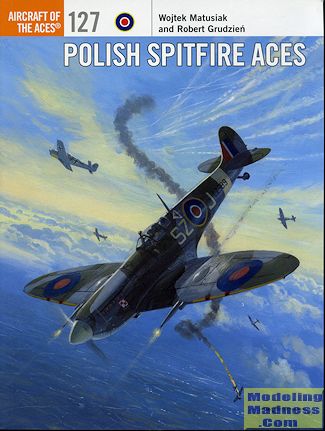 During
WWII, the RAF had to rely on those members of the armed forces of nations who
escaped the German invasions of their homeland. One of the largest contingents
of pilots and crews came from Poland as there were ample opportunities for these
men to escape that may not have been available for those of other nations.
During
WWII, the RAF had to rely on those members of the armed forces of nations who
escaped the German invasions of their homeland. One of the largest contingents
of pilots and crews came from Poland as there were ample opportunities for these
men to escape that may not have been available for those of other nations.
However, the British at the time were not about to allow
foreign nations to have a military presence on their soil. However, they did
allow for units of different nationalities to be incorporated into the RAF. So
it was with the Poles, Dutch, Belgians, French Norwegians and others to help the
fight against Hitler. A major hurdle is that, unlike today, English was not a
language that was spoken by the citizens of these other nations and so there was
a pretty steep learning curve for many pilots.
Though initially being used to man bomber squadrons
where there was little radio traffic between planes and ground, it was soon
realized that what was needed were fighter pilots. Squadrons were formed on
Hurricanes at first and near the end of the Battle of Britain, Polish squadrons
eventually got Spitfires. By the summer of 1941, there were seven Polish
squadrons, most of them flying Spitfire Vs. Eventually these units moved on to
later variants, mostly Spitfire IXs.
These squadrons flew a variety of missions over Europe
and one small detachment was sent to the Mediterranean and operated with 145
Squadron. Polish pilots were quite successful and while this book concentrates
on those pilots who flew for the Polish squadrons, several were also operating
with other units. Literally dozens of pilots were able to reach ace status, some
of them being very good at the job.
This book is their story. Starting before the war with a
brief look at the PAF during that time and during the German invasion. Then on
to those who flew for France and finally the days of mid-1940 when Polish pilots
were finally allowed to fly with Fighter Command. We are taken through some of
the more interesting engagements such as the RAF's first encounter with the
FW-190, which was erroneously written off as an underperforming plane, to the
detriment of many RAF pilots. Filled with period photos of pilots and planes as
well as the usual pages of full color profiles one expects from this series,
this one fits right in with others in the series. Well written and interesting
reading, it is a great reference as well and I book I can easily recommend to
you.
June 2015
For more on the complete line of Osprey books,
visit http://ospreygrp.com. In the US, it is
Osprey Direct at 44-02 23rd St, Suite 219, Long Island City, NY 11101., where you can
get a catalogue of available books.
If you would like your product reviewed fairly and quickly, please
contact
me or see other details in the
Note to
Contributors.
 During
WWII, the RAF had to rely on those members of the armed forces of nations who
escaped the German invasions of their homeland. One of the largest contingents
of pilots and crews came from Poland as there were ample opportunities for these
men to escape that may not have been available for those of other nations.
During
WWII, the RAF had to rely on those members of the armed forces of nations who
escaped the German invasions of their homeland. One of the largest contingents
of pilots and crews came from Poland as there were ample opportunities for these
men to escape that may not have been available for those of other nations.